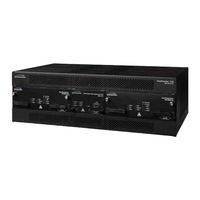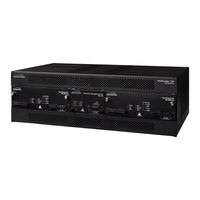Symmetricom TimeProvider 1100 Manuals
Manuals and User Guides for Symmetricom TimeProvider 1100. We have 3 Symmetricom TimeProvider 1100 manuals available for free PDF download: User Manual, Reference Manual
Symmetricom TimeProvider 1100 User Manual (224 pages)
Edge Clock
Brand: Symmetricom
|
Category: Clock
|
Size: 2 MB
Table of Contents
-
-
Overview20
-
Shelves20
-
-
-
Clocks23
-
-
System Power33
-
-
-
-
Alarms41
-
Smartclock43
-
Bestime43
-
-
Shelf46
-
-
Front Access46
-
Rear Access47
-
-
GPS Antenna49
-
-
-
-
TL1 Overview86
-
Using Syncraft102
-
-
-
Enabling CRC4116
-
-
Normal Response132
-
Response Format132
-
Clearing Alarms135
-
System Commands138
-
-
-
Test Overview146
-
Test Equipment146
-
-
Test Record153
-
-
-
Manual Updates192
-
-
-
Serial Ports194
-
LAN Port195
-
-
Clocks195
-
Inputs196
-
Outputs198
-
Alarms200
-
Input Alarms200
-
Output Alarms200
-
-
Power200
-
Mechanical201
-
Roof Antenna201
-
Environmental202
-
-
Overview214
Advertisement
Symmetricom TimeProvider 1100 User Manual (216 pages)
Edge Clock
Brand: Symmetricom
|
Category: Clock
|
Size: 6 MB
Table of Contents
-
-
-
Shelf42
-
-
Front Access42
-
Rear Access43
-
-
-
GPS Antenna45
-
-
-
-
TL1 Overview80
-
-
Enabling CRC4108
-
System Commands128
-
-
-
-
Test Overview136
-
Test Equipment136
-
-
Test Record143
-
-
-
-
-
Serial Ports188
-
LAN Port189
-
-
Clocks189
-
Inputs190
-
Outputs191
-
T1 Retimer192
-
Alarms193
-
Input Alarms193
-
Output Alarms193
-
-
Power193
-
Roof Antenna194
-
Mechanical194
-
Environmental195
-
Overview206
-
Symmetricom TimeProvider 1100 Reference Manual (180 pages)
Edge Clock TL1 Reference Guide
Brand: Symmetricom
|
Category: Clock
|
Size: 0 MB
Table of Contents
-
-
-
-
Ping (PING)70
-
Mask Table137
-
System Commands140
Advertisement


